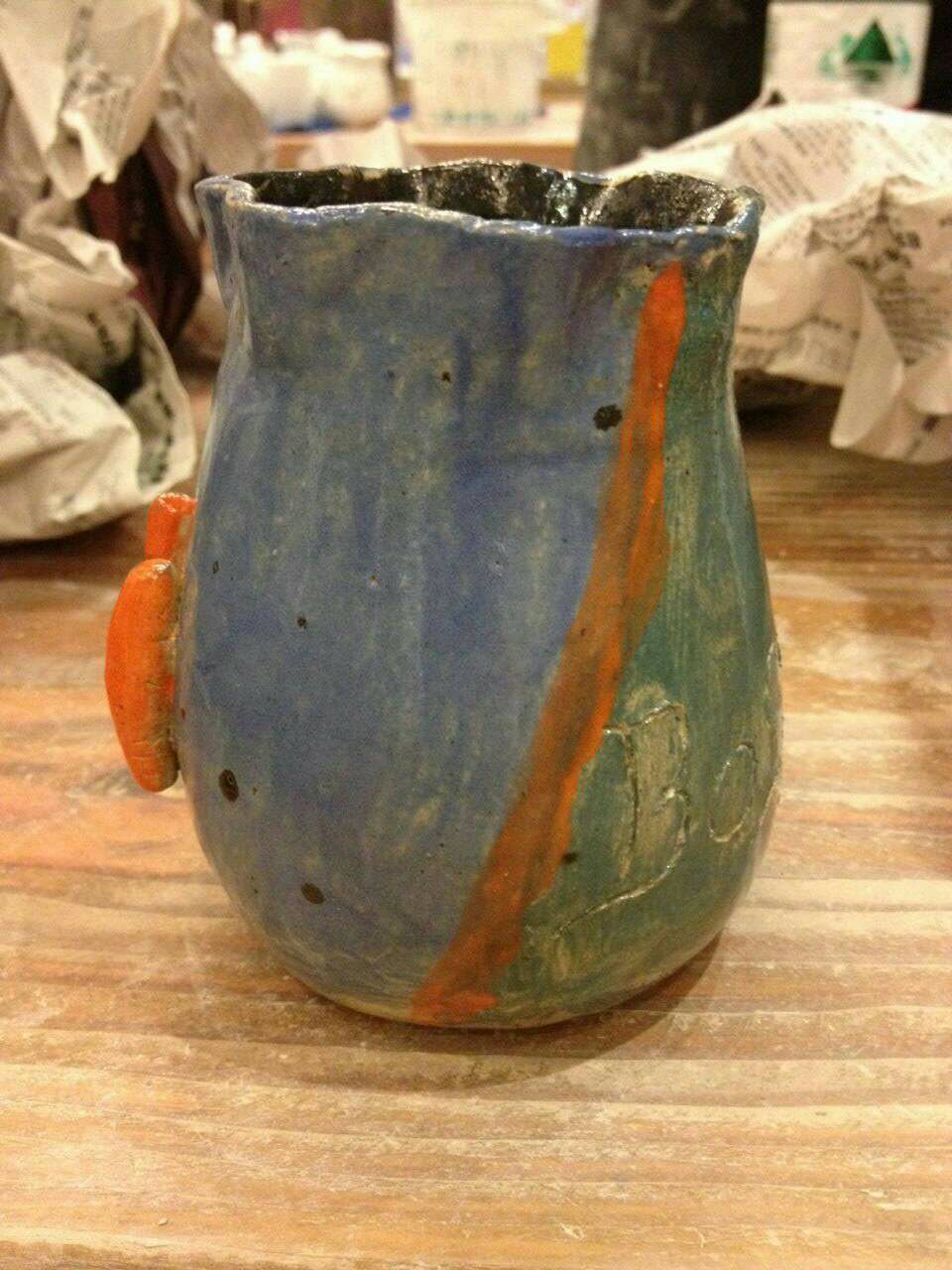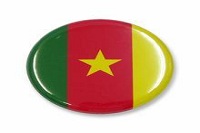Civil Engineering International Class 131/132 have a funny experience for making ceramics. June,2015, the shop named TAO YITIAN, located on an old history street in north of Hangzhou, near the Grand Canel. The students worked very hard and made very pretty procucts. They made the brown clay to any shape with a whirly tool and then colored everywhere of their lovely cups and small basins. the products will be kept the the shop for two weeks in order to be burned in a large oven. This is also the way that Chinese people make cups, bowles, and many arts.
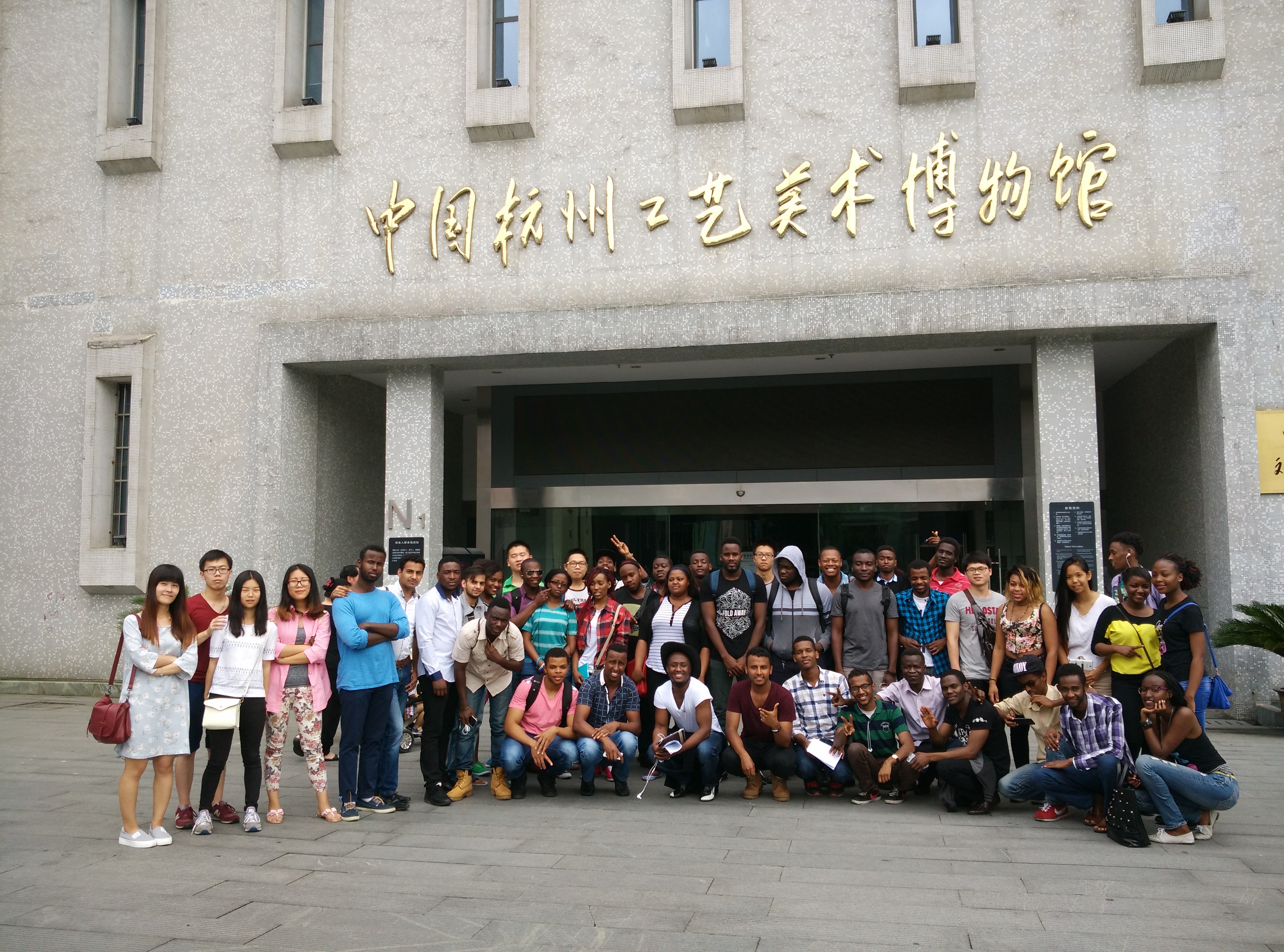

The word ceramic, derives its name from the Greek keramos, meaning "pottery", which in turn is derived from an older Sanskrit root, meaning "to burn". The Greeks used the term to mean "burnt stuff" or "burned earth". Thus the word was used to refer to a product obtained through the action of fire upon earthy materials.


Ceramics make up one of three large classes of solid materials. The other material classes include metals and polymers. The combination of two or more of these materials together to produce a new material whose properties would not be attainable by conventional means is called a composite. Examples of composites include steel reinforced concrete, steel belted tyres, glass or carbon fibre - reinforced plastics (so called fibre-glass resins) used for boats, tennis rackets, skis, and racing bikes.
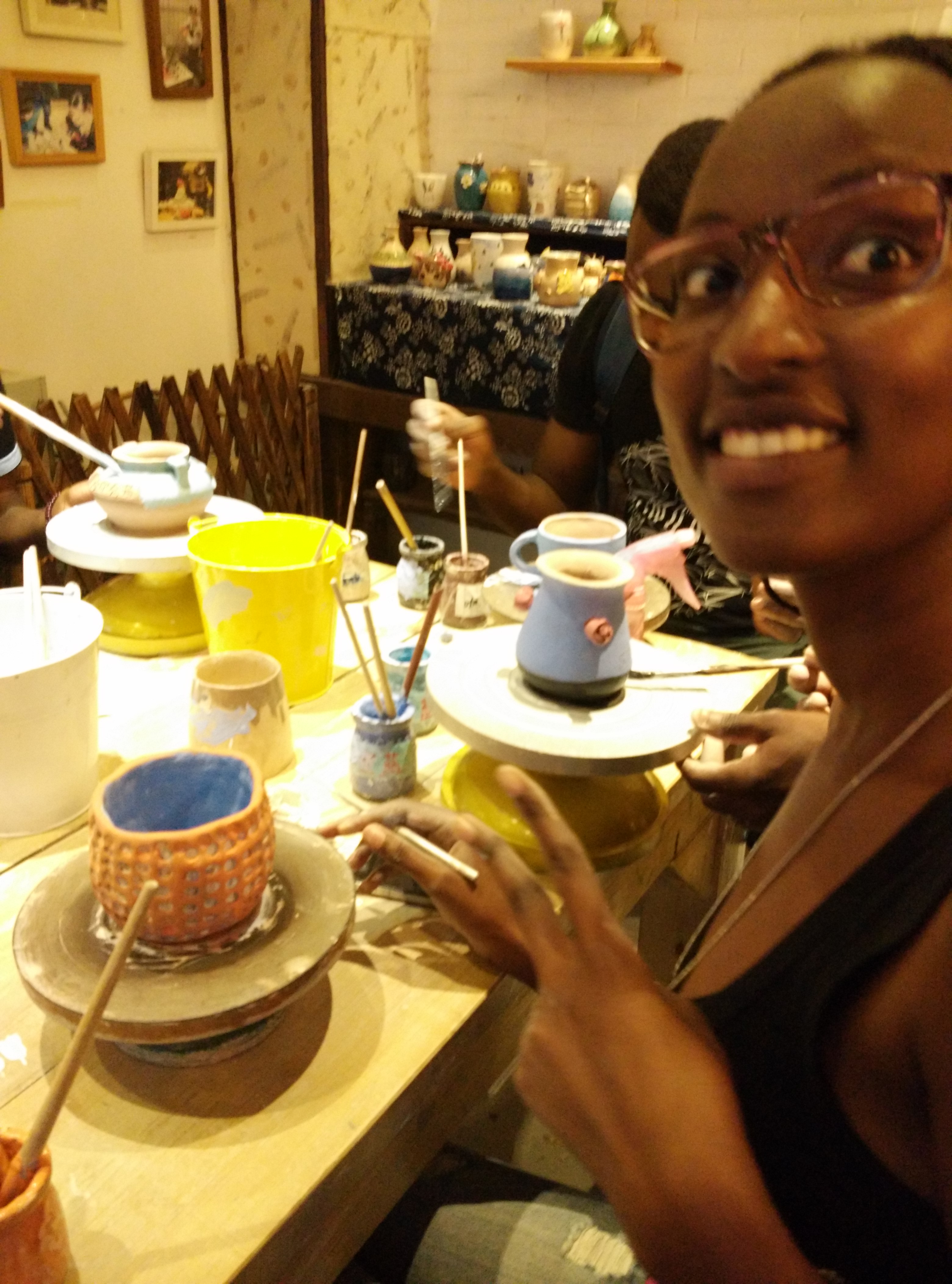
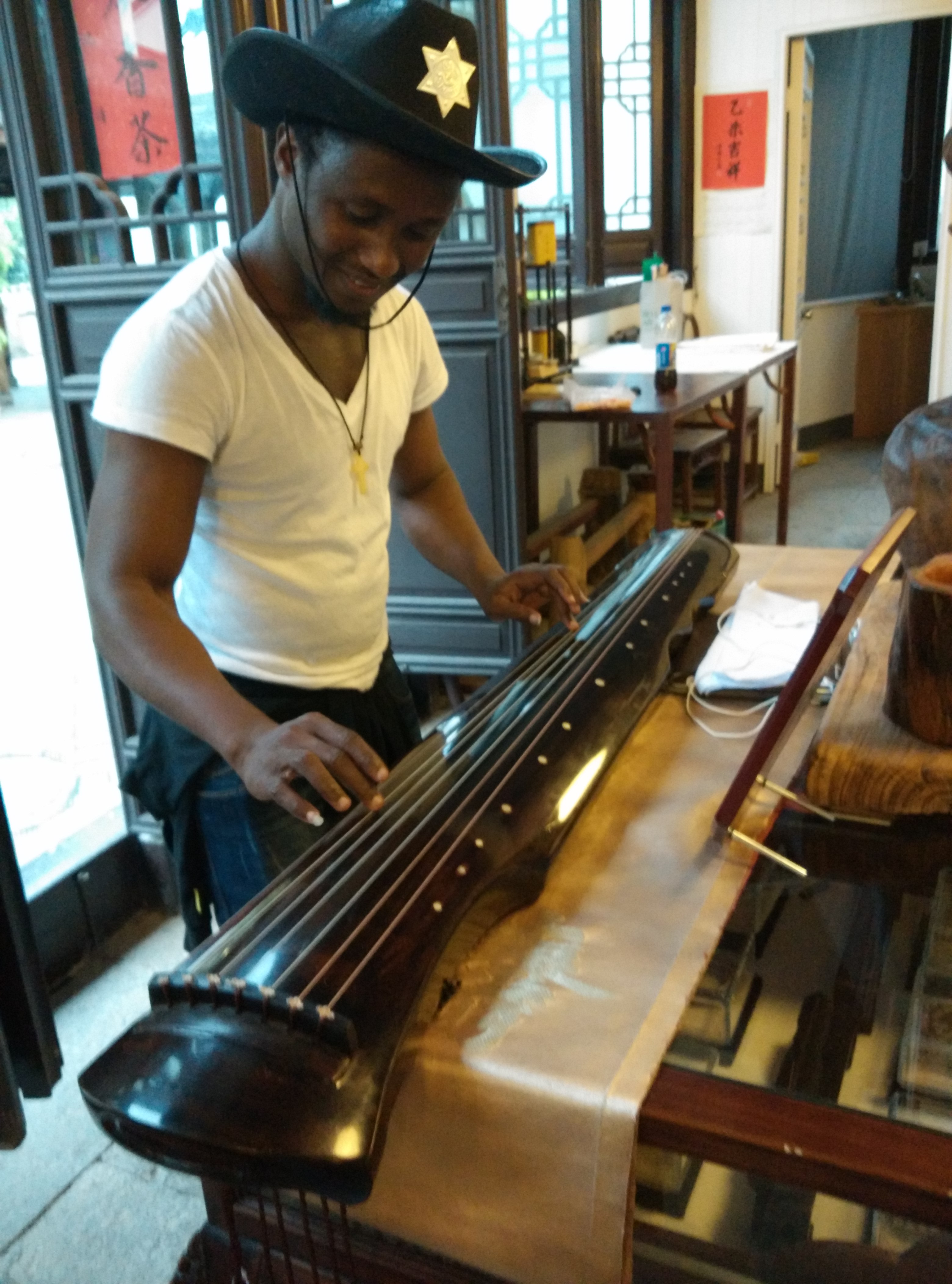
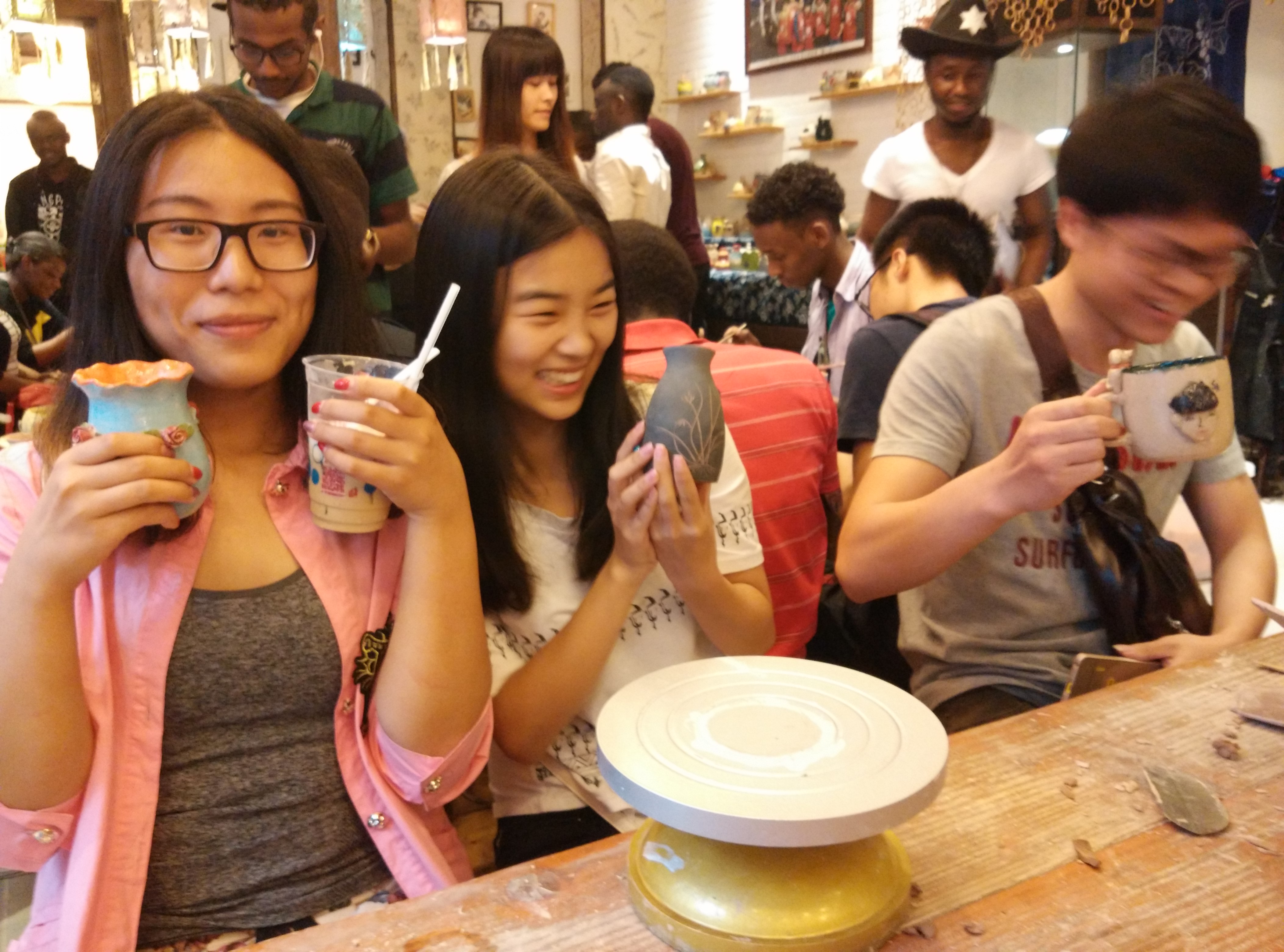
Ceramics can be defined as inorganic, non-metallic materials that are typically produced using clays and other minerals from the earth or chemically processed powders. Ceramics are typically crystalline in nature and are compounds formed between metallic and non-metallic elements such as aluminium and oxygen (alumina- Al2O3 ), silicon and nitrogen (silicon nitride- Si3N4) and silicon and carbon (silicon carbide-SiC). Glass is often considered a subset of ceramics. Glass is somewhat different than ceramics in that it is amorphous, or has no long range crystalline order. Most people, when they hear the word ceramics, think of art, dinnerware, pottery, tiles, brick and toilets. The above mentioned products are commonly referred to as traditional or silicate-based ceramics. While these traditional products have been, and continue to be, important to society, a new class of ceramics has emerged that most people are unaware of.
Those are student's first products, can you believe this is the first time they made ceramics?

